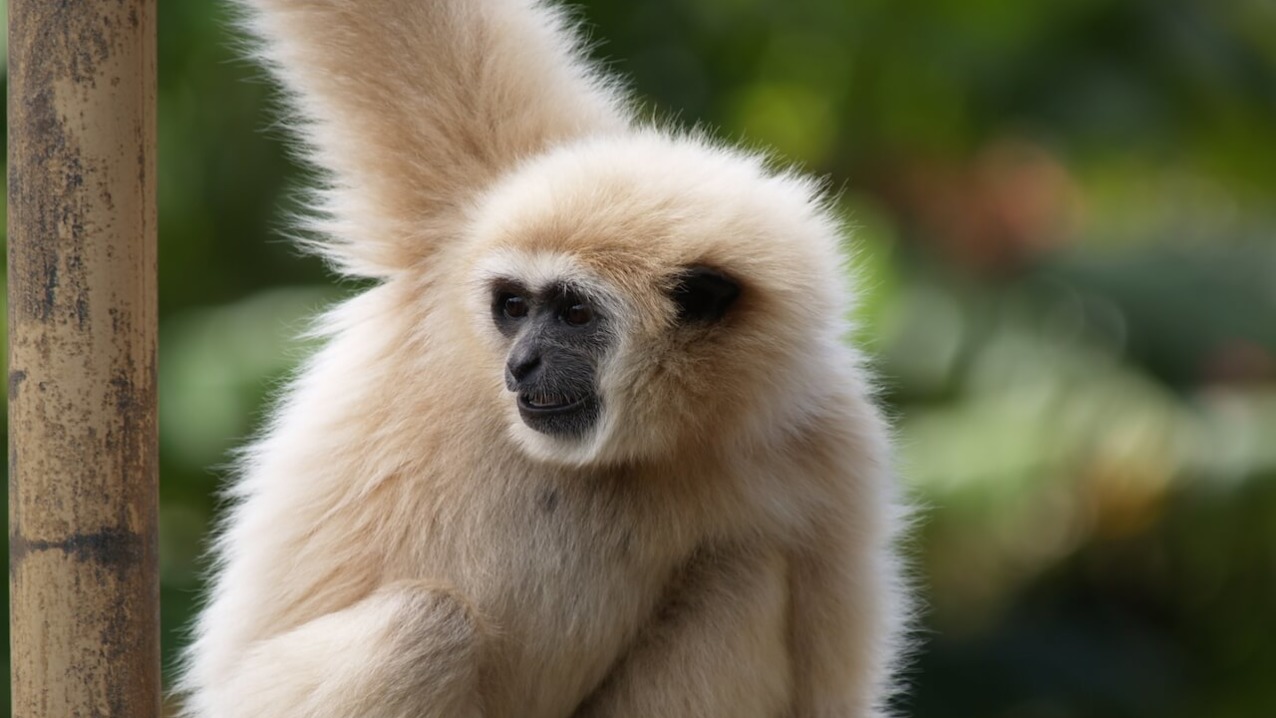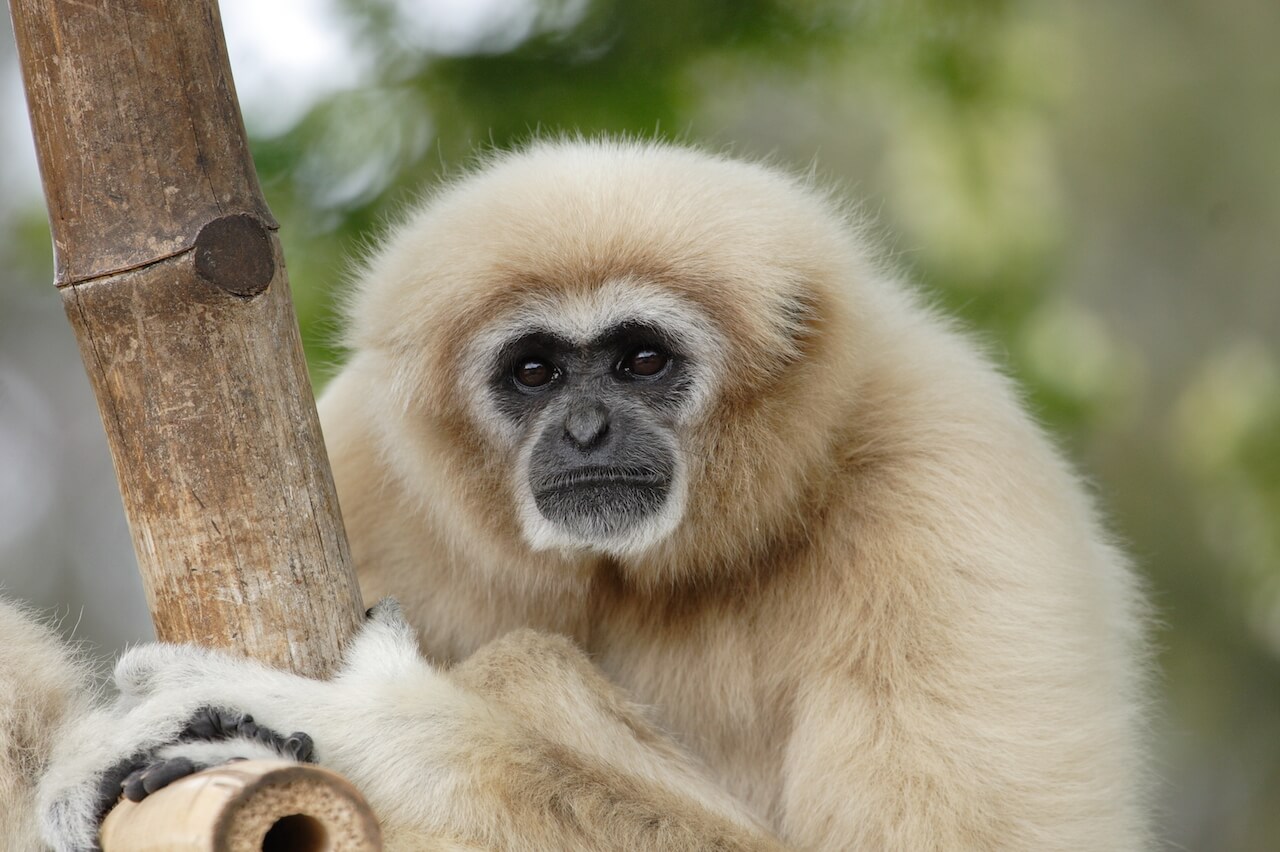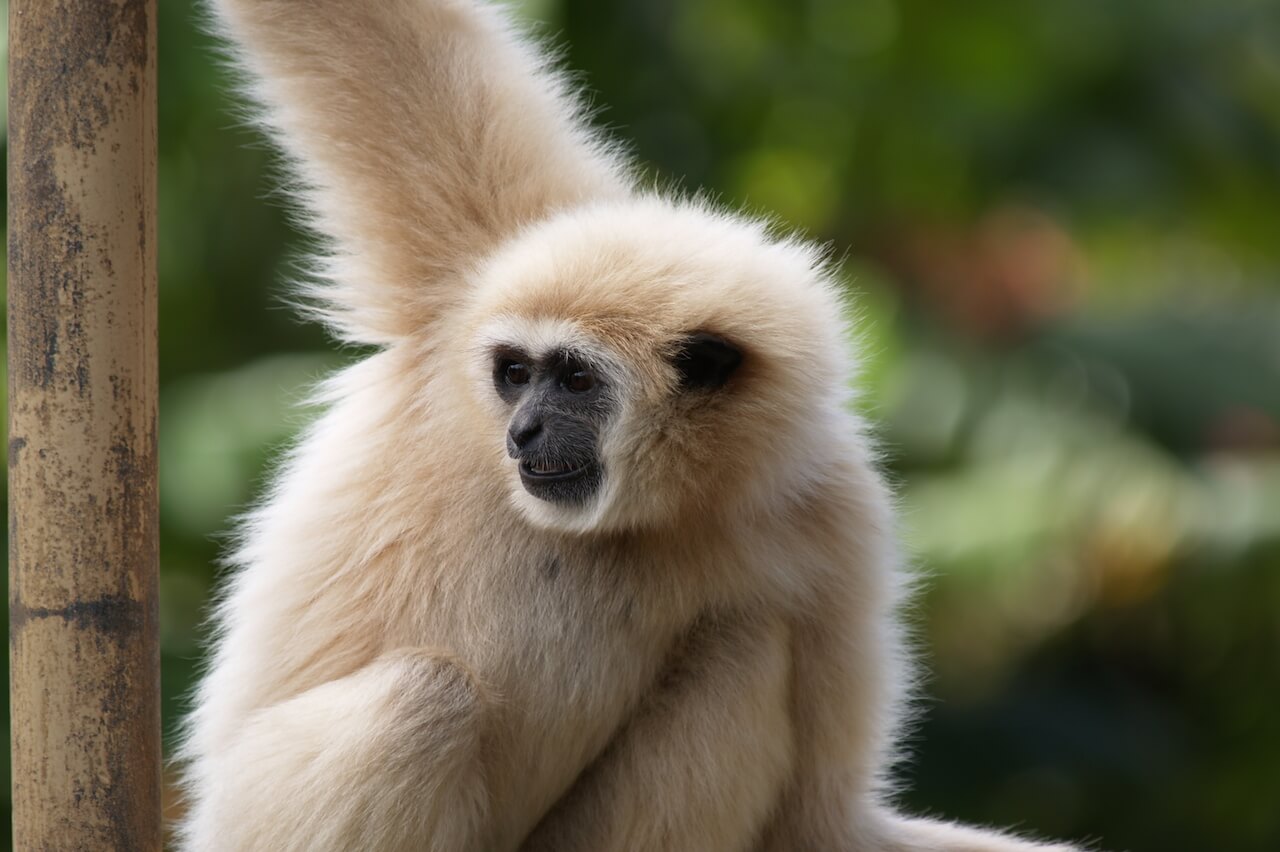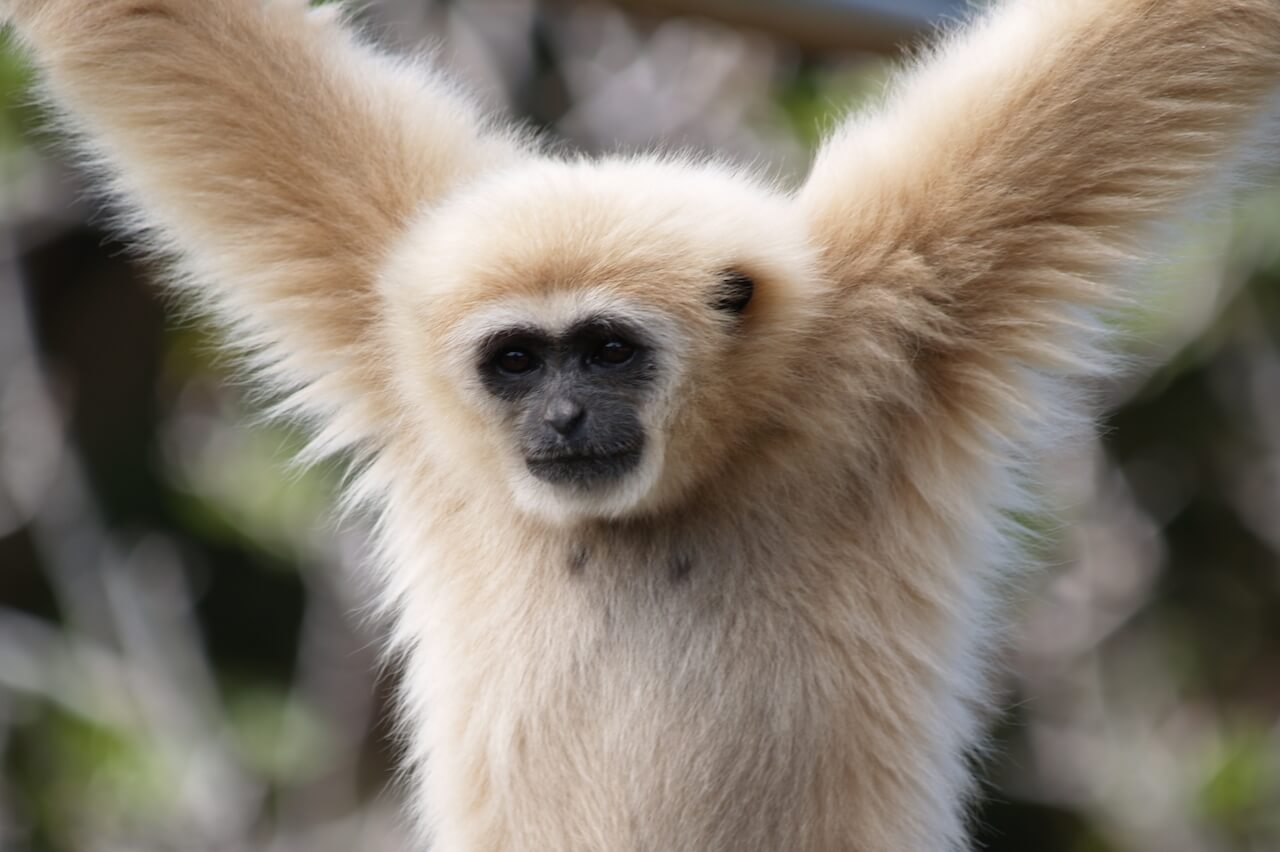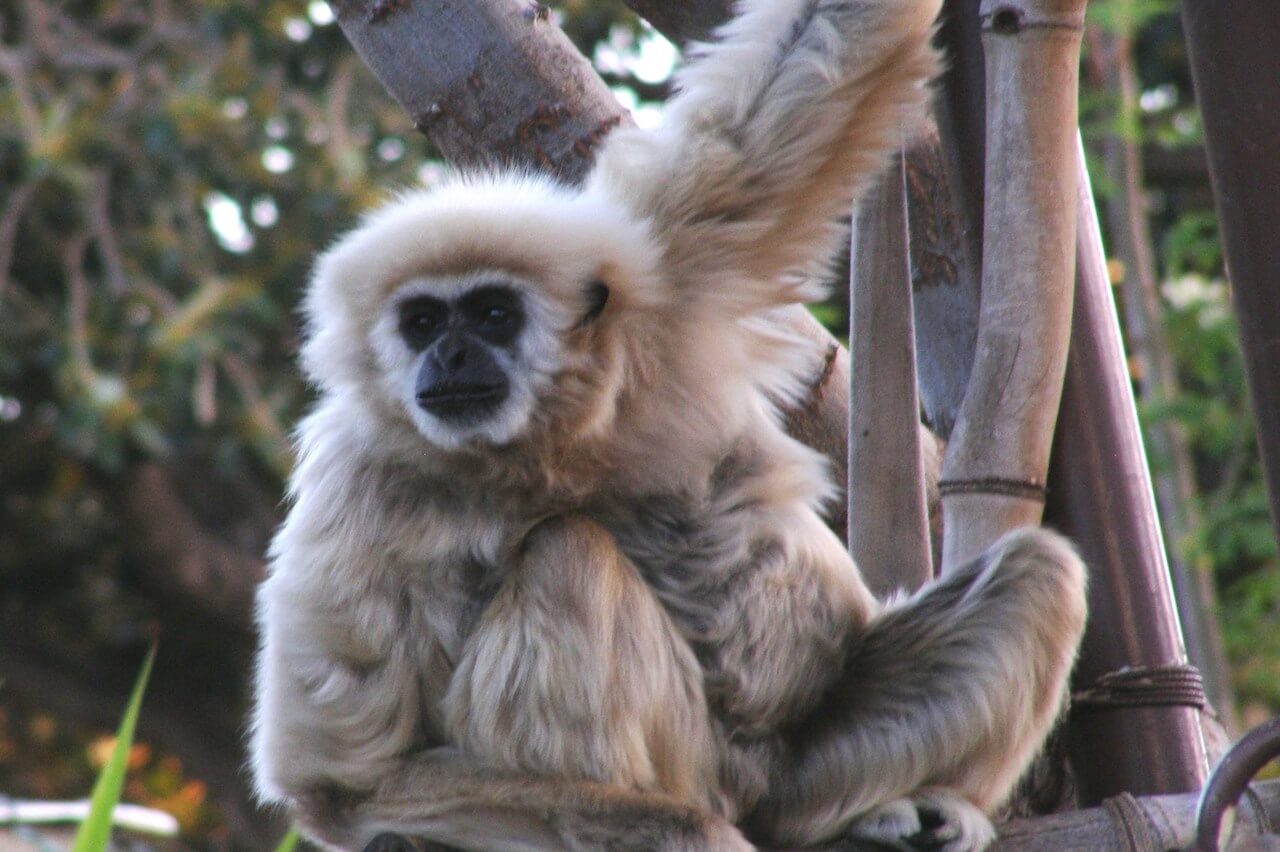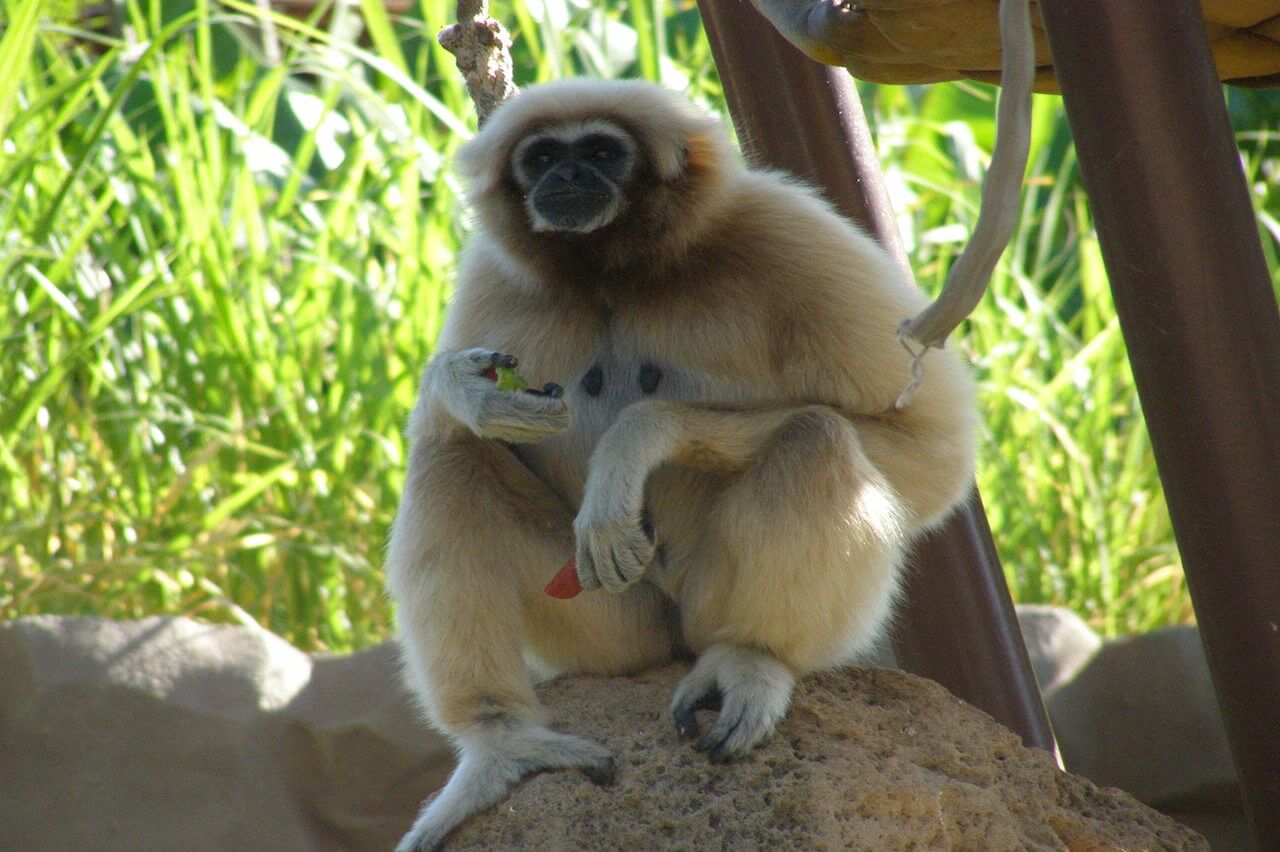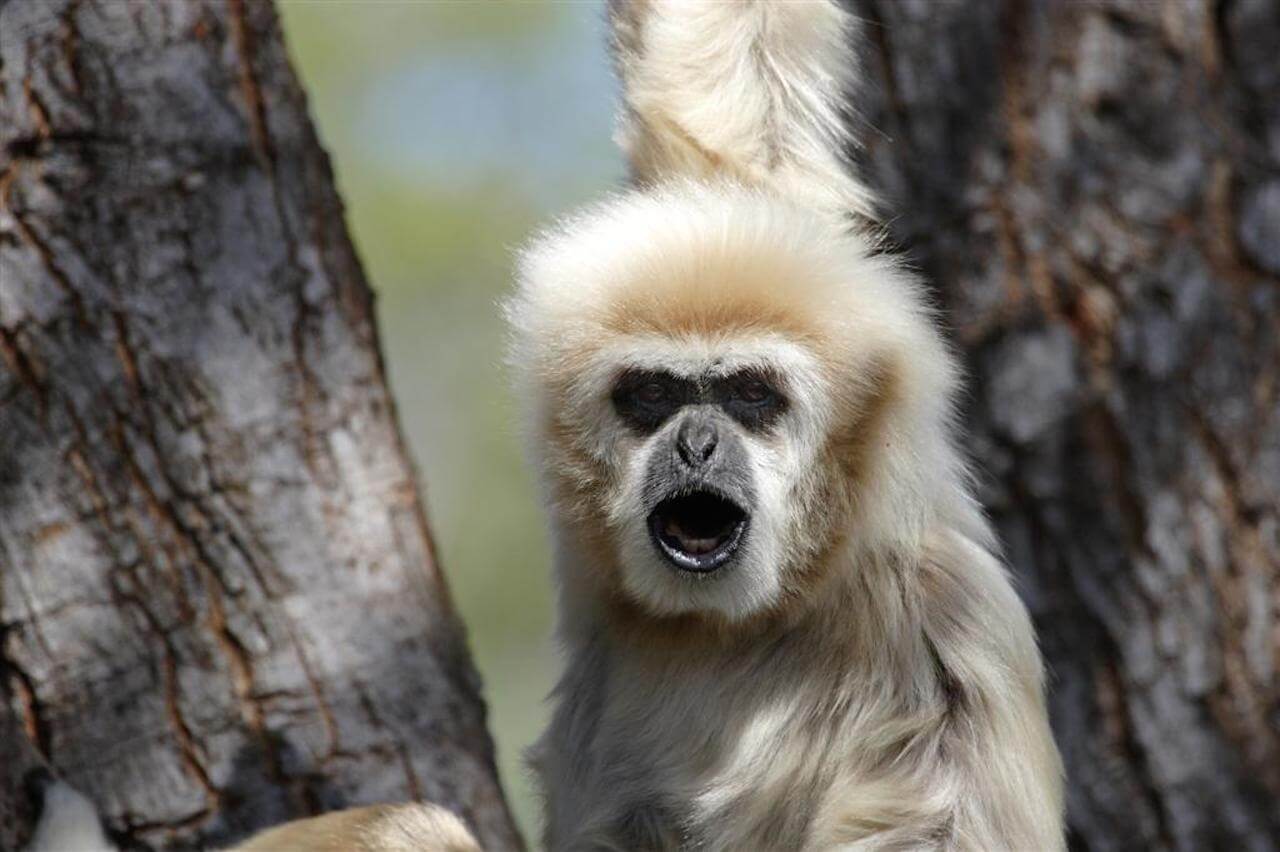hylobates lar
White-Handed Gibbon
About Me
Scientific Name: Hylobates lar
Description
The White-handed gibbon, like the gorilla, chimpanzee and orangutan, is an ape, not a monkey. The chief characteristics distinguishing apes from monkeys are the absence of a tail, their more or less upright posture and the high development of their brain. The White-handed gibbon has a black to pale brown or yellowish-gray fur body, with white hair framing a black naked face.
Fun Facts
- The palms of the hand and soles of the feet are also free of fur and white in color, hence its name.
- White-handed gibbons brachiate, or swing by the arms, from branch to branch horizontally and vertically.
- Kingdom: Animalia
- Phylum: Chordata
- Class: Mammalia
- Order: Primates
The White-handed gibbon, like the gorilla, chimpanzee and orangutan, is an ape, not a monkey. The chief characteristics distinguishing apes from monkeys are the absence of a tail, their more or less upright posture and the high development of their brain. The White-handed gibbon (also know as the Lar gibbon) has a black to pale brown or yellowish-gray fur body, with white hair framing a black naked face.
The palms of the hand and soles of the feet are also free of fur and white in color, hence its name. The animal’s long arms and grasping hands with thumb, contribute to its ability to swing through the trees.
Adult males weigh 10-20 lbs, females are slightly smaller. Dense fluffy fur keeps these animals cool in hot temperatures, and also presents a larger image to predators.
The tough, horny pads on their buttocks are fused to the hip bones and are indispensable to this animal that builds no nest. The pads provide some protection when the gibbon rests on bare tree limbs.
These arboreal primates are found in the forests of Southeast Asia and Sumatra, from lower Burma south through the Malay Peninsula and east throughout Thailand.
White-handed gibbons brachiate, or swing by the arms, from branch to branch horizontally and vertically. Their long, strong arms enable them to quickly change direction in flight and to catch a handhold if they fall.
White-handed gibbons live in peaceful family troops of 8-15 members, within a territory ranging in size from 30-100 acres.
This territory is marked by a whooping, piercing “song,” which broadcasts precise information on the species and sex of individuals, the area occupied by the adults and the presence of sub-adults ready to form a new pair. A different bark-like call is used to warm troop members of danger.
With a keen sense of hearing and their agility in the trees, they are equipped to avoid the leopards, birds of prey and snakes that hunt them.
White-handed gibbons live on leaves, buds and blossoms, tree ants and other insects, snails, small vertebrates, nestlings, and bird eggs. In the Zoo they are fed fruit, vegetables, monkey chow and water.
A single offspring is born after a seven-month gestation period. The young clings to the mother night and day, developing slowly. At six months, it begins to brachiate and only later learns to walk.
When the animal reaches sexual maturity in 6-10 years, it meets other gibbons in common feeding grounds, where after courtship, new family groups are formed.
The White-handed gibbon is declining in numbers as man enters its forested territory, often killing the mothers and capturing the young for a lucrative pet market. Some areas, such as Thailand have provided protection for this species. The Honolulu Zoo and other zoos are also engaged in breeding programs of the endangered gibbon.
Sandy (Male) b. 7/22/75
Japan (Female) b. 1/1/77
Santos (Male) b. 1/30/91
Micah (Male) b. 2/8/99
Emma (Female) b. 8/13/00
Other Mammals

Sacred Baboons are common throughout northeastern Africa, but are extinct in the Nile region and Egypt, where they originally received their name and were worshiped by the ancient Egyptians.
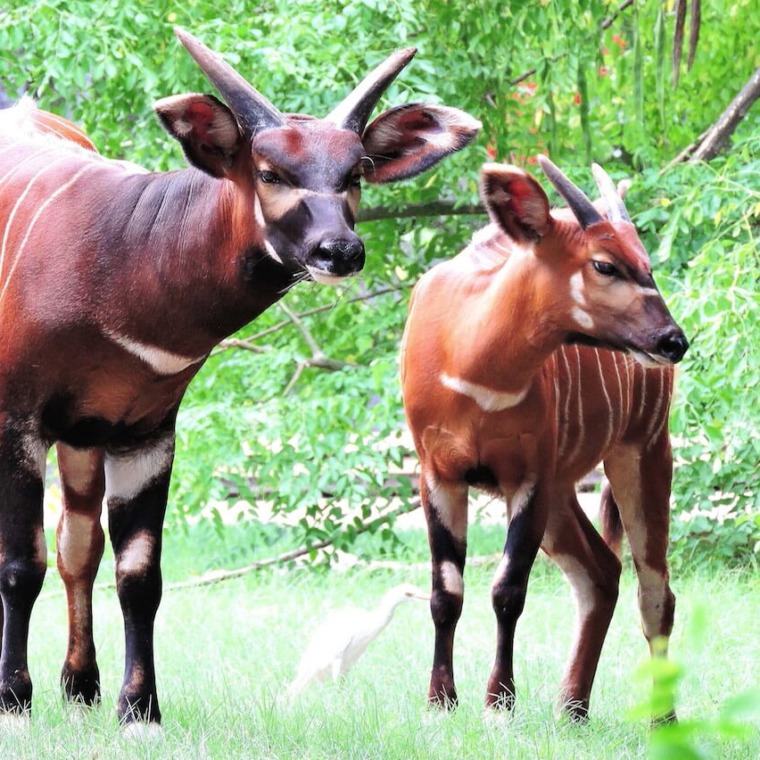
Bongo are most active at dawn and dusk, and often forage near the edges of wooded areas. They normally shy in the wild and flee into the forest for cover at the slightest provocation.
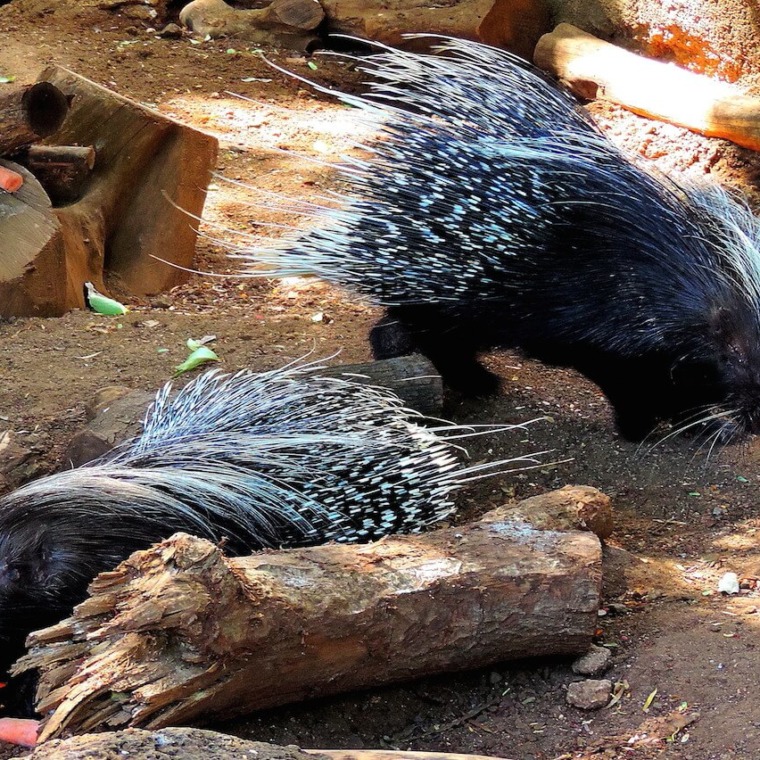
The North African crested porcupine is nocturnal. They are very adaptable and can be found in forests, on plantations, in rocky or mountainous areas as well as in deserts.
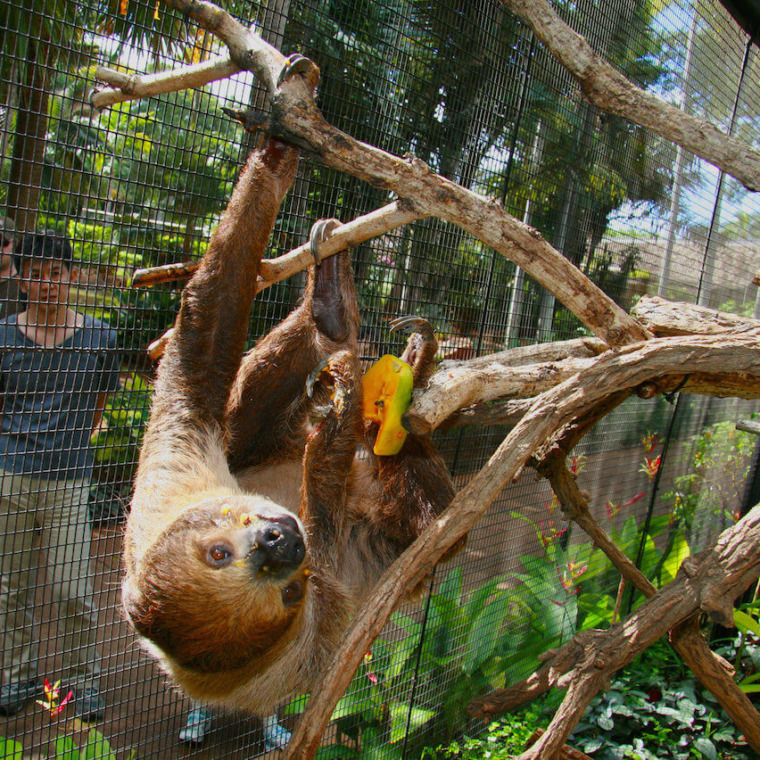
Sloths are found in Central and South America in the rain forest canopy. The Linne’s two-toed sloth is found in such countries as Nicaragua, Columbia, Venezuela, Surinam, Guyana, French Guiana, North Central Brazil, and Northern Peru.
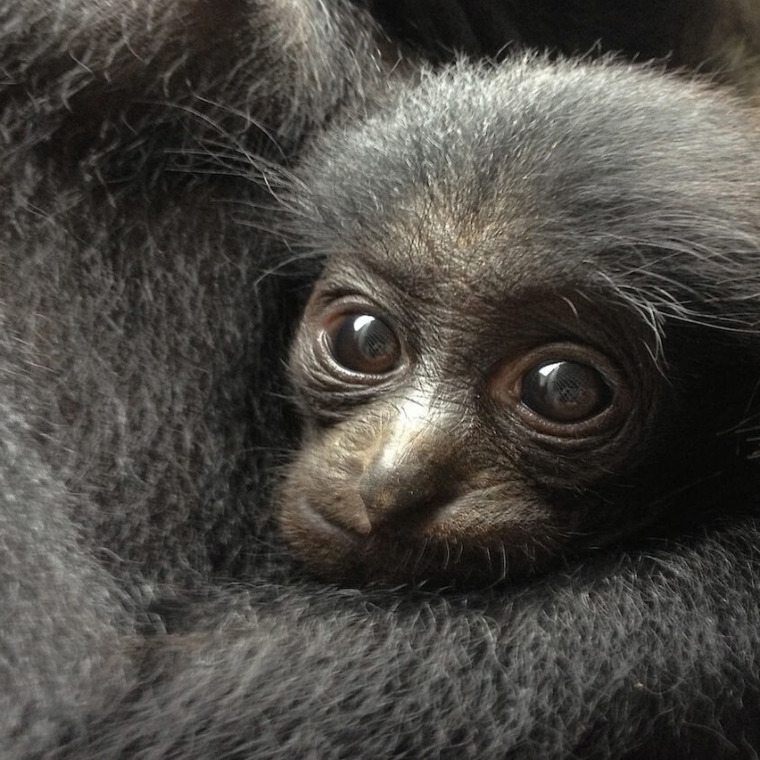
Siamangs range through southeastern Asia and are found in some numbers in the Malay Peninsula and Sumatra.


